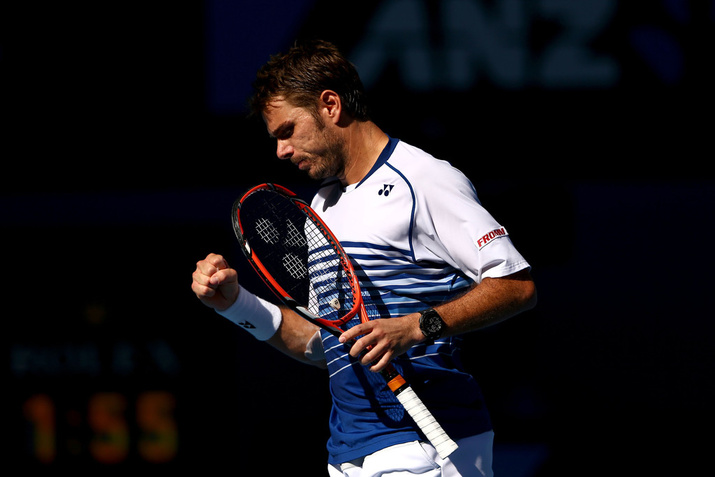Don't miss any stories → Follow Tennis View
FollowWawrinka and the Elusiveness of Elite Status in Tennis
Tennis can be such a fickle sport sometimes. Take Stanislas Wawrinka, for example. He has been a solid top-30 player for about seven years before last year's Australian Open. He had cracked the top 20 and even top 10 every once in a long while, but he really hovered on the edge of that top-30 range.
Then, everything changed when he beat Novak Djokovic in last year's epic Australian Open quarterfinal match. He also started beating Rafael Nadal in the final in impressive fashion before Rafa's back tightened up and changed the nature of the match. Undoubtedly, last year's Australian Open was a breakthrough performance for the talented Swiss, who had never really put it all together before. Wawrinka wasn't just a flash in the pan, though. Three months later, he won the Monte Carlo title in similarly impressive fashion. Wawrinka had solidified his place in the current upper echelon of tennis.
Then again, the Big Four Era has trained us to expect far too much out of our top players. One Grand Slam and one Masters title in a year (especially without a few more finals) isn't considered a top performance anymore. And so, after being out of the tennis limelight for nine months, Wawrinka is now in some murky middle ground in the minds of fans.
His semifinal opponent, on the other hand, has won one Grand Slam in each of the last three years. And yet, because of his incredible breakout in 2011, Novak Djokovic is still always regarded as a top threat in every major. (Granted, he's won a lot of Masters 1000 events in there too). So what is the real difference in perception between Wawrinka's one Grand Slam last year and Djokovic's one Grand Slam last year?

Those results in Masters 1000 events do play into it a lot. But it's also a statement about the nature of this sport. Fans and media reward extended excellence. Djokovic earned his place among the elites of the game right now with that 2011 campaign and will always be viewed up there until we see extended poor results. Wawrinka, on the other hand, had three months near the top of the game and then reverted back to where the rest of the top 10 stood. A real point of difference between Djokovic and Wawrinka was their consistency. If you take away Djokovic's top two tournaments, he is still the No. 2 player in the world. Take away Wawrinka's top two results? He falls out of the top 10.
Of course, this fickleness is also found from match to match. Wawrinka did not look like a player contending to win a Grand Slam in his first four matches here. He never looked in danger of losing, but he wasn't the dominant presence on court that we have come to expect from major champions. Then, in the quarterfinal against a real threat in Kei Nishikori, he flipped a switch. Nishikori might have looked a step off at times, but Wawrinka was back in the form that won him this tournament last year.
Djokovic, on the other hand, hasn't really been challenged yet. The tough opponents that he has faced haven't been the proper matchups to threaten him. Wawrinka, though, is another matter entirely. Djokovic and Wawrinka have played stirring epics in their last two meetings here. Novak has spent less time on court, so he might be fresher. On the other hand, maybe breezing through matches hasn't properly prepared him for the test that Stan will put up. Sometimes, there's no way to know how everyone will respond in a given situation. As I said, tennis is a fickle sport.










